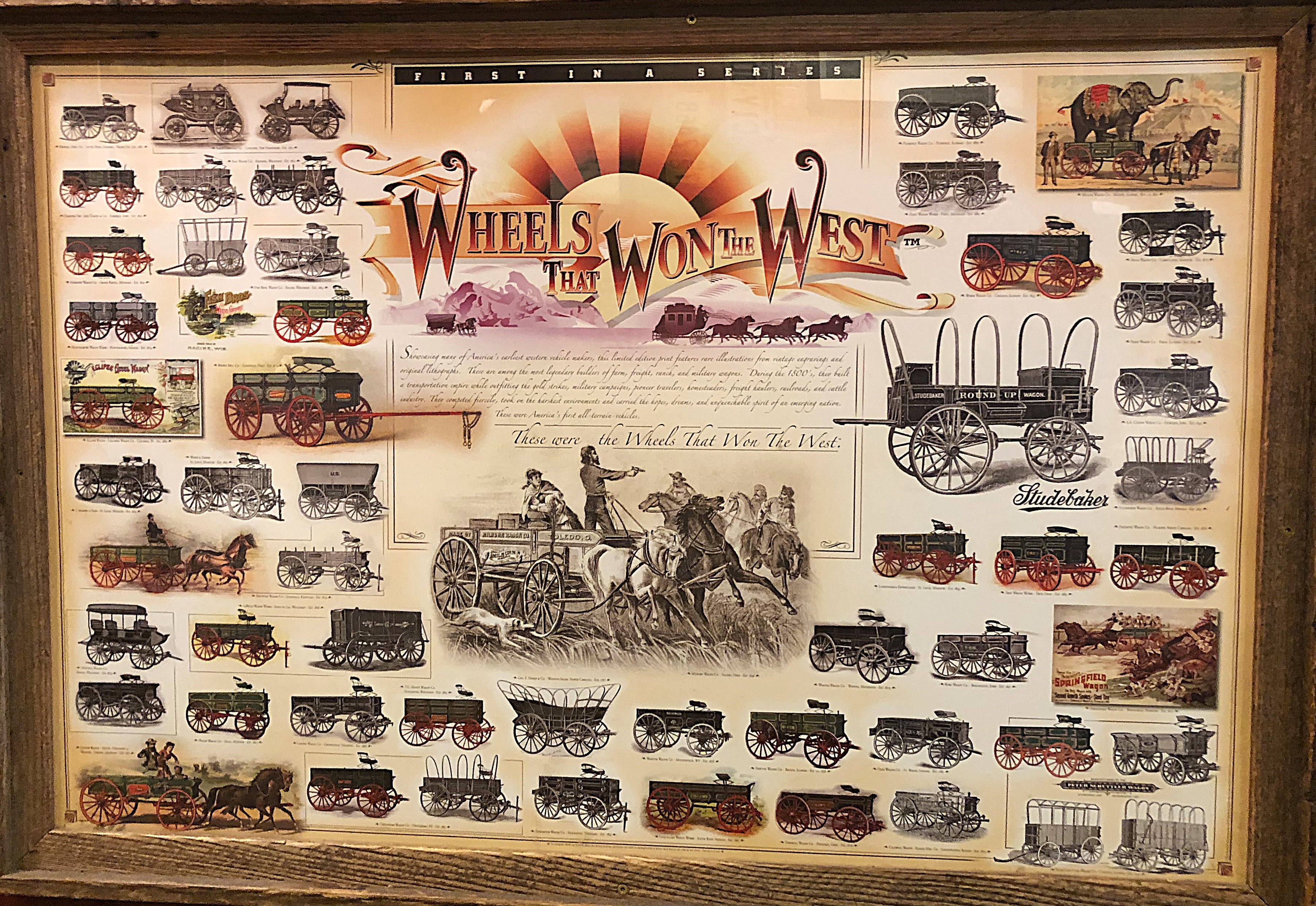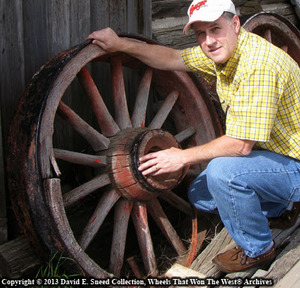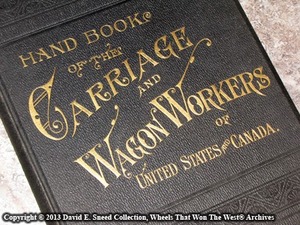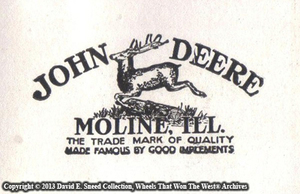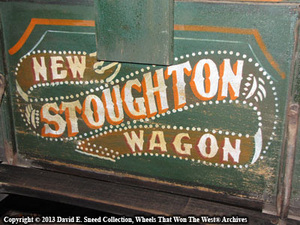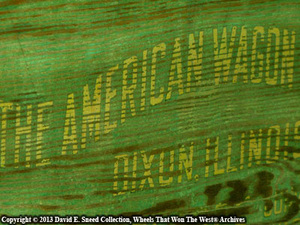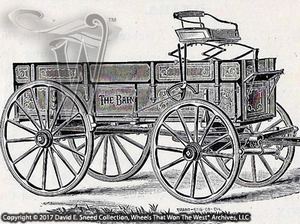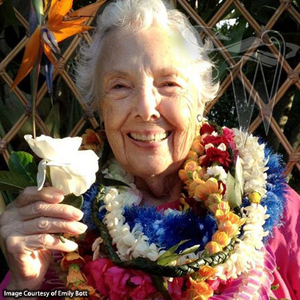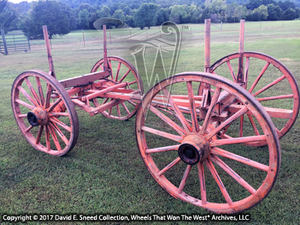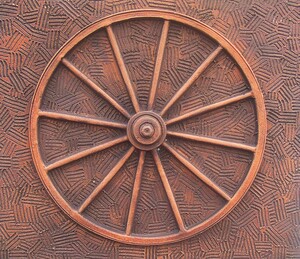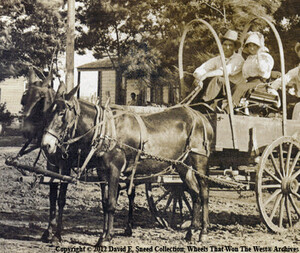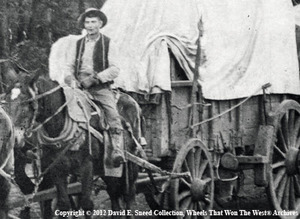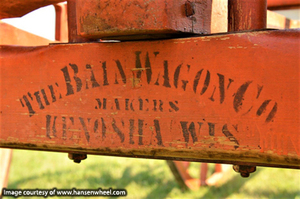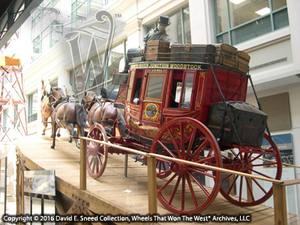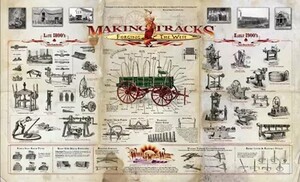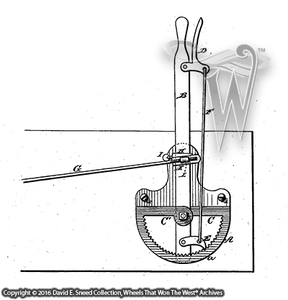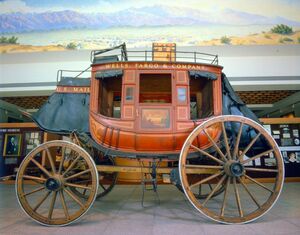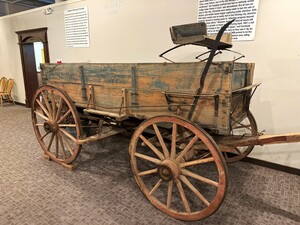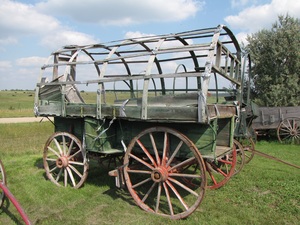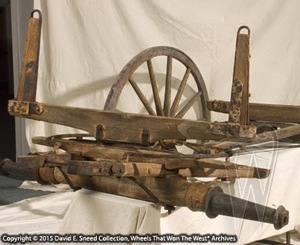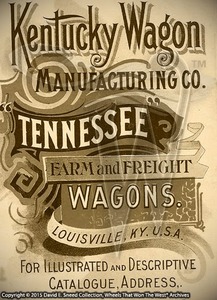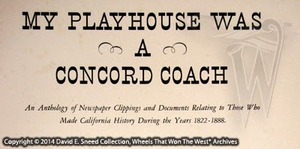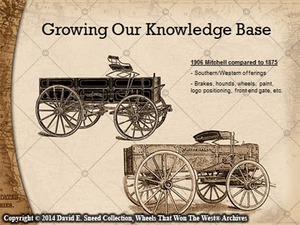There are a lot of primary source stats and stories that can help shed light on America's early wagon and stagecoach industries. As we (impatiently) wait for the warmer weather of spring, I thought it might be interesting to share a couple dozen talking points related to the wheels that built and sustained the American West. Oh, and let me know how successful you are with the last point (no cheating!). Have a great week!
- Winona brand wagons were not the only ones built with 'Iron Clad Hubs.' It's another example of why wagon makers cannot be conclusively identified based on a single part of the vehicle.
- Heavy freight wagons often used double-tired rear wheels. (That's 2 tires - the outer metal bands - on each rear wheel).
- By definition, a Conestoga wagon is a large freighting vehicle and not a smaller emigrant or farm wagon.
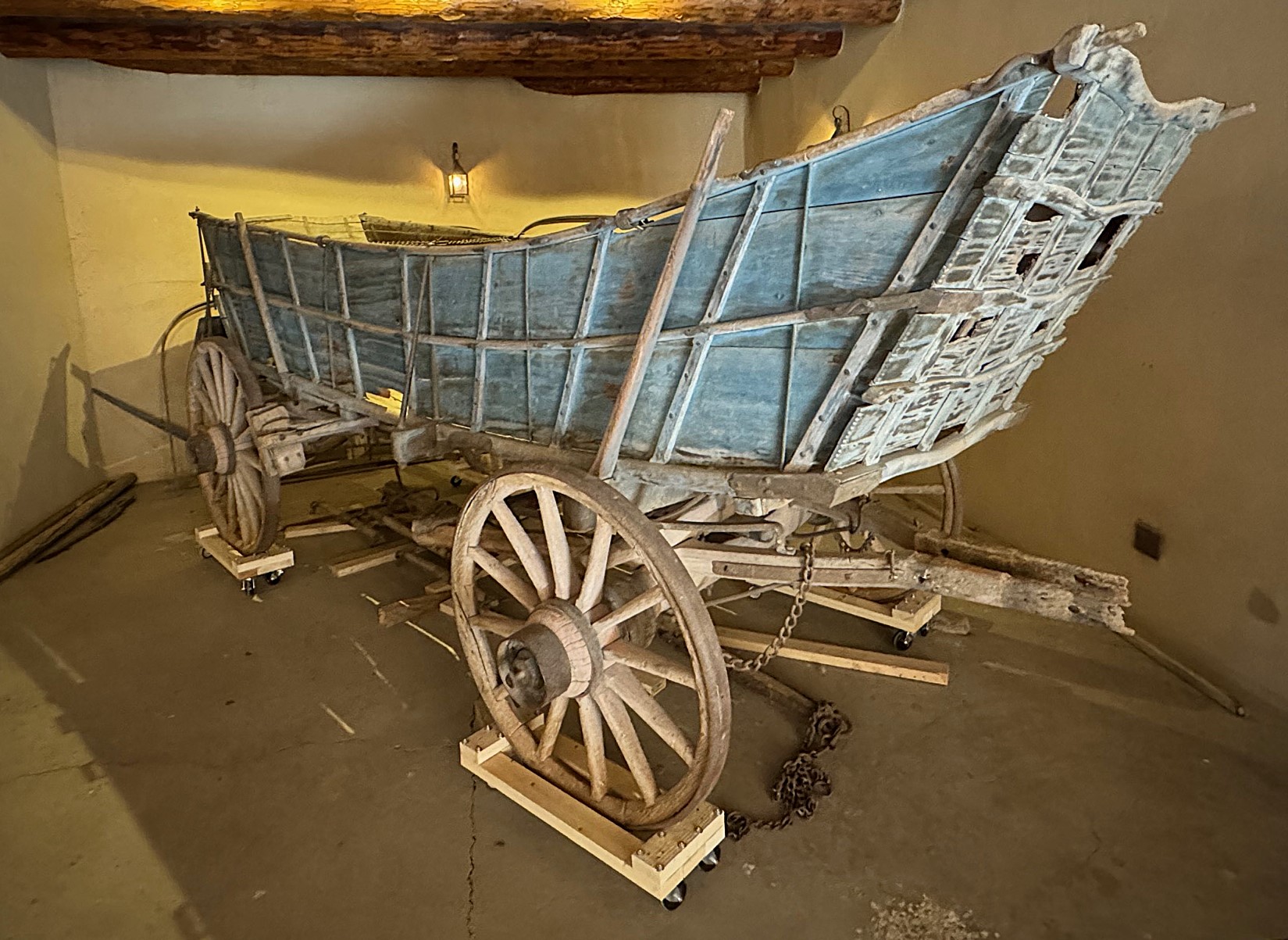
A Conestoga freight wagon on display at Bent's Old Fort in Colorado.
- There were many different kinds of vehicles used as a 'stage' to haul passengers. Some sat on thoroughbraces, some were mounted on springs, and still others were dead axle wagons.
- The Bain wagon factory in Kenosha, Wisconsin was first used by Henry Mitchell to build his vehicles (Mitchell wagons).
- Weber wagons were manufactured for almost sixty years prior to the company being sold to IHC (International Harvester) in 1904. Nonetheless, pre-IHC Weber wagons are typically much harder to find than those built after 1904.
The 'Bain' wagon brand, made in Woodstock, Ontario Canada, is not connected to wagons of the same name built in Kenosha, Wisconsin USA.
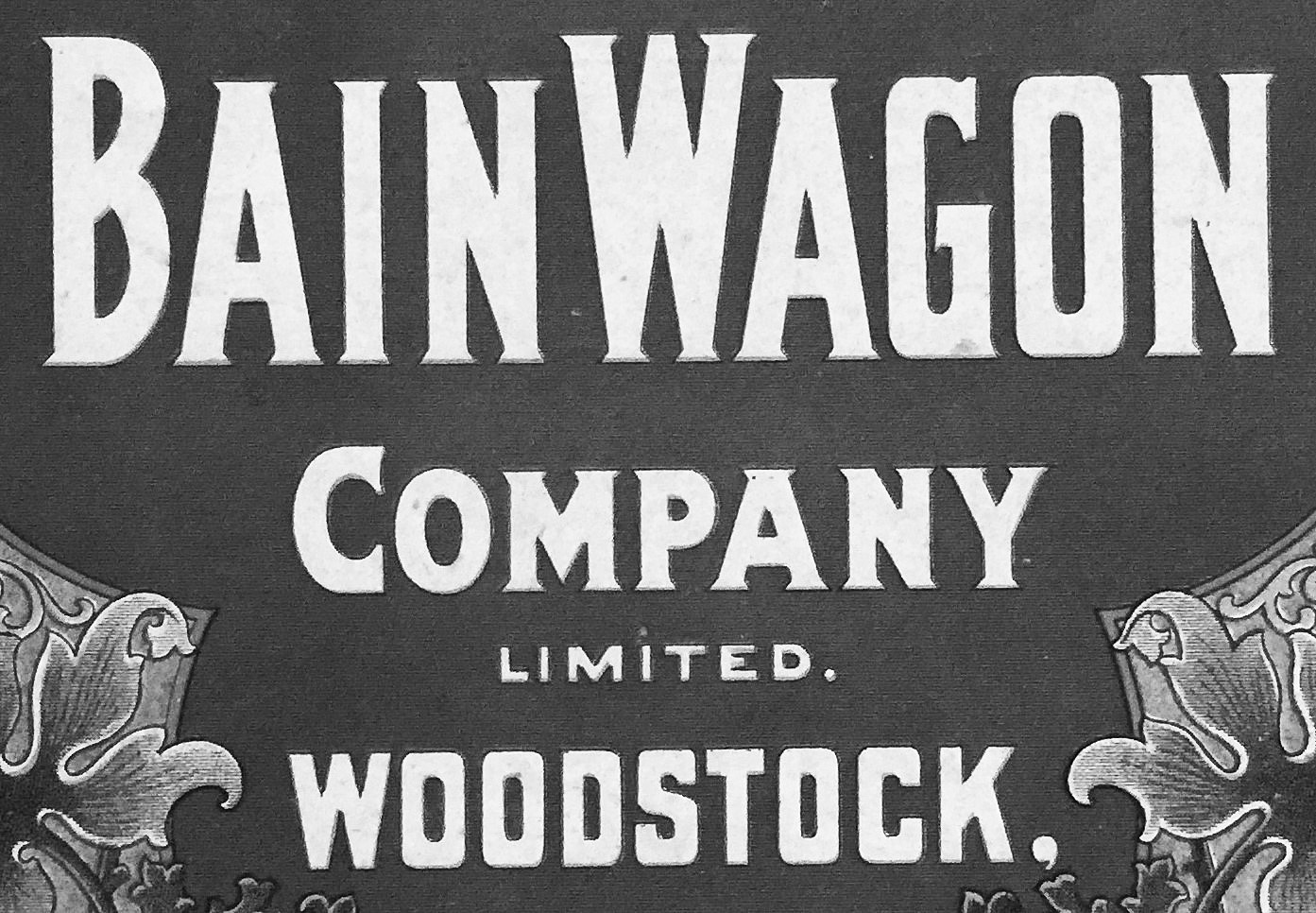
The Bain Wagon Company from Woodstock, Ontario was not connected to the Bain Wagon Company in Kenosha, Wisconsin.
- The Kentucky Wagon Company built the last Studebaker-branded wagons. Today, Studebaker remains a highly-sought-after brand. Even though the Kentucky-built Studebaker wagons were the last made, they are extremely difficult to find. As of this writing, most surviving Studebaker wagons built by Kentucky will be close to or just over a century in age.
- The Springfield Wagon Company in Springfield, Missouri built the last Schuttler-branded wagons.
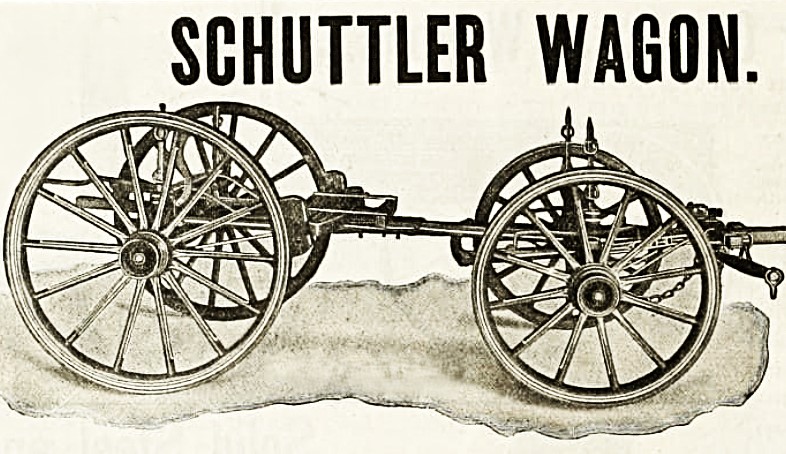
Throughout a near one hundred year history, the Schuttler wagon brand was one of America's most preeminent brands.
- No wagons were factory-branded as a 'John Deere' wagon until 1910. You may find the 'John Deere' name on a pre-1910 wagon but it will be as the selling agency and not the maker.
- A near mint condition, original Columbus brand wagon (IHC) can be seen at Harold Warp's Pioneer Village in Minden, Nebraska.
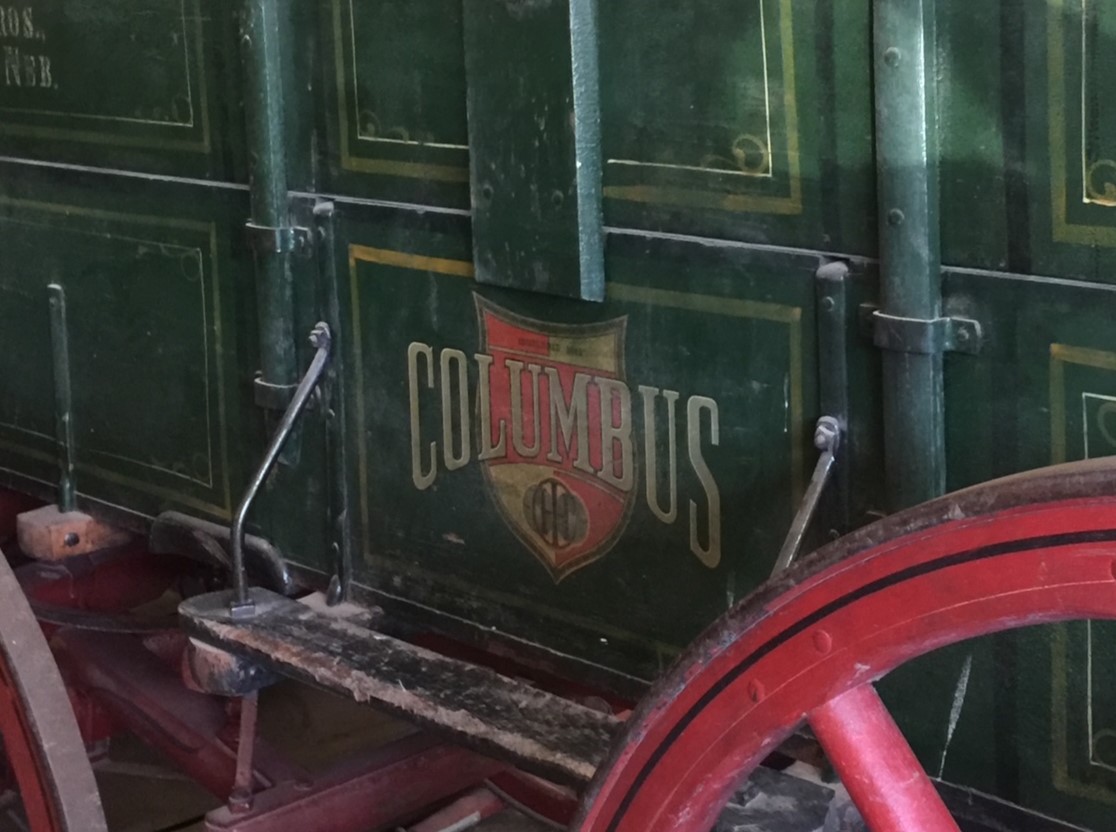
This incredibly well-preserved Columbus brand wagon was built in Chicago by International Harvester.
- The first Buick automobiles in the U.S. were built in the Flint Wagon Works factory in Flint, Michigan, making Flint wagons a bridge between two transportation worlds - those of the horse-drawn era and some of the earliest beginnings of General Motors.
- The Stoughton Trailer Company will showcase it's 160-year history with the completion of a new headquarters facility in 2025. The brand's roots go all the way back to 1865 with the Mandt Wagon Works and the Stoughton wagon brand. We were pleased to assist Stoughton Trailer and Hansen Wheel & Wagon Shop with exclusive consulting details related to the company's history as well as the restoration of a late 1800's Stoughton wagon.
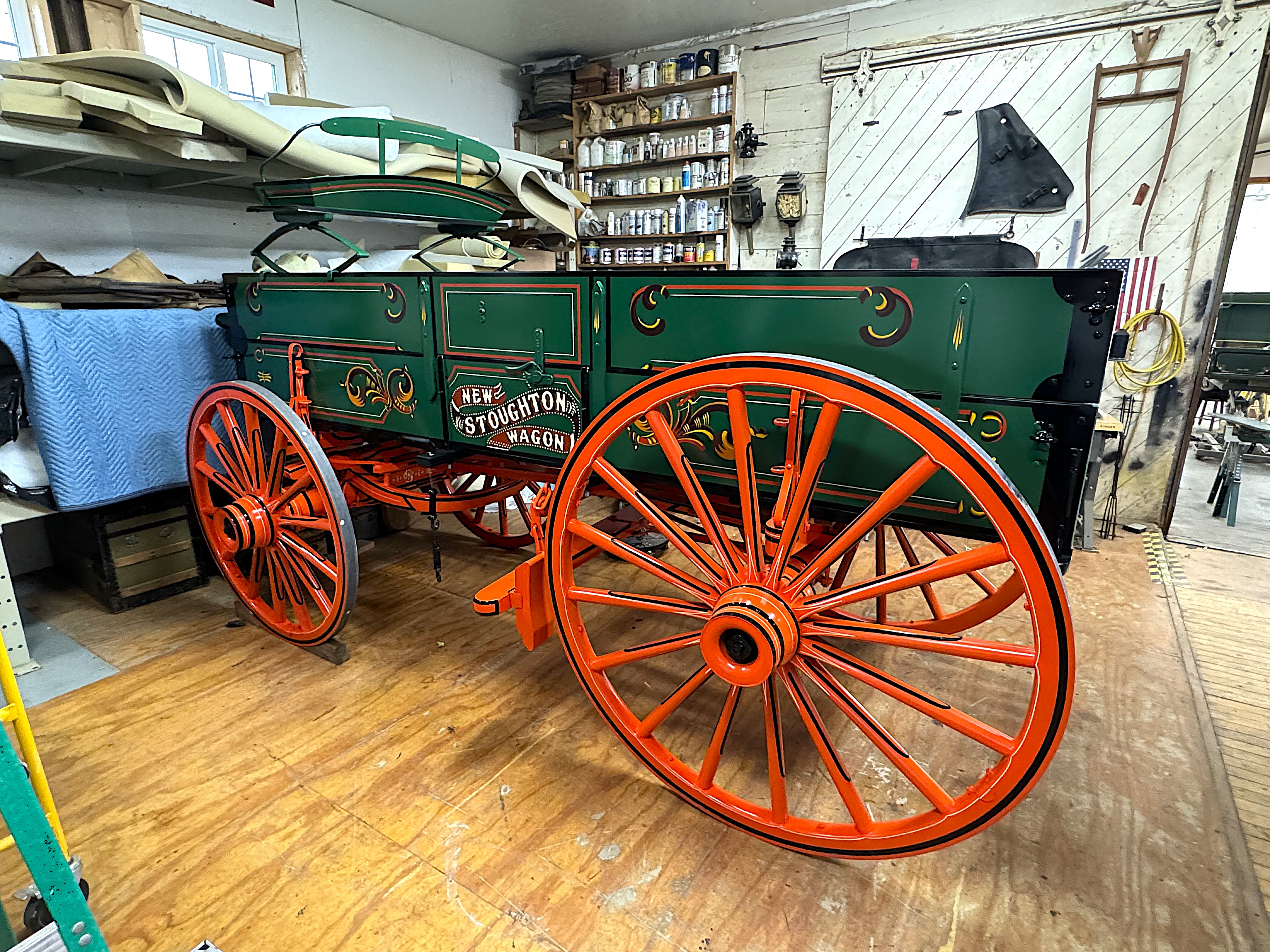
Doug Hansen and his team were almost finished with restoring this 1890's-era Stoughton wagon when we visited them in July of 2024.
- Wagon designs tended to evolve over time. Understanding who did what, when, and how can help point to a timeframe of manufacture.
- Abbot-Downing was not the only maker of horse-drawn Yellowstone Park coaches.
- An ultra-rare, 1870s-era, six-mule, U.S. Army Escort wagon is on display at the Pioneer Memorial Museum in Douglas, Wyoming.
- Early automotive steering mimicked designs on wagons built by the Champion Wagon Company in Owego, NY.
- Spring seats, bows, bow staples/clips, brakes, folding end gates, jockey boxes, and feed boxes were often sold as accessories to a base wagon offering.
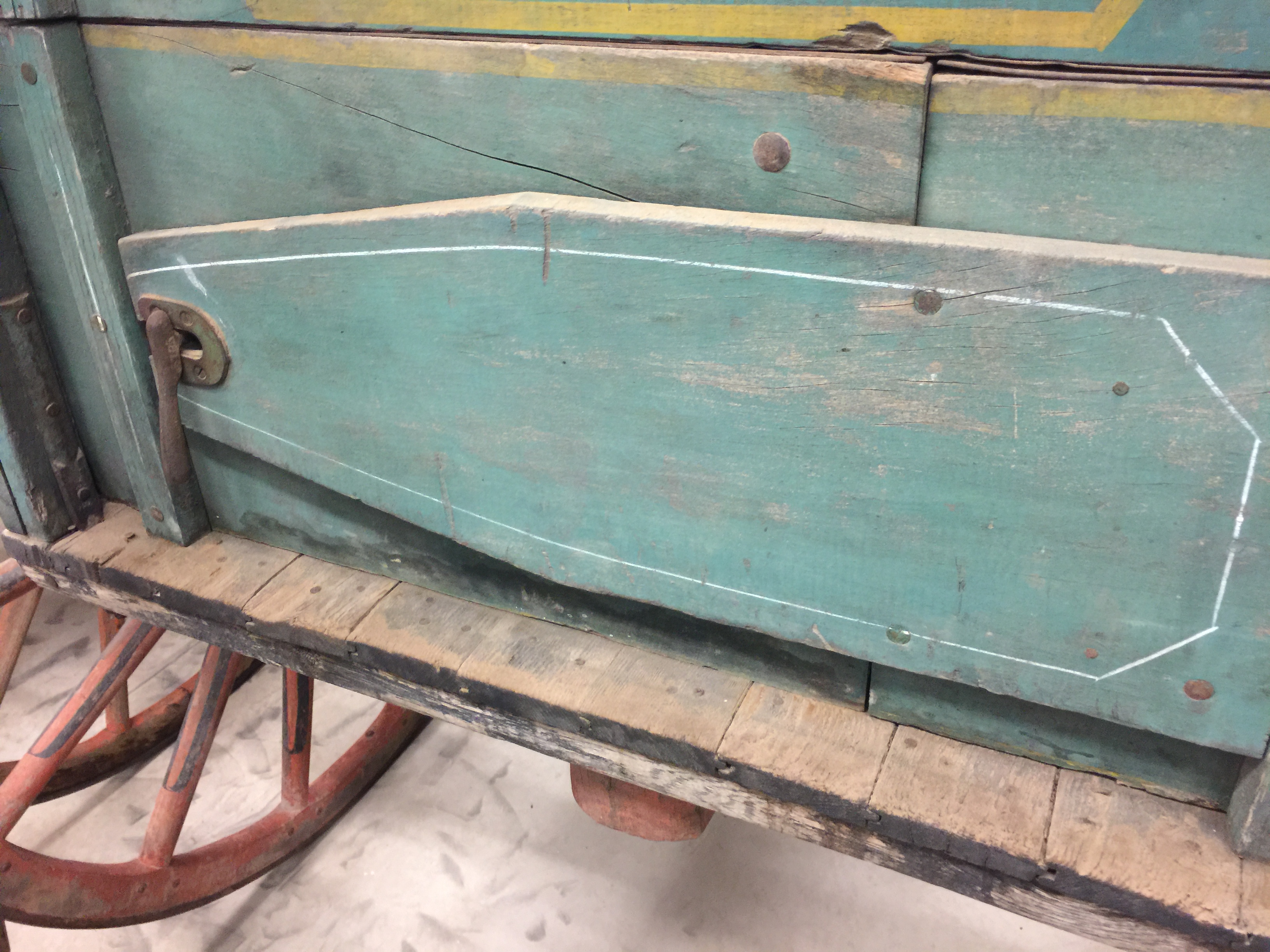
A folding end gate was also considered an option for some makes.
- A wagon hooked to a lead freight wagon was often referred to as a Trail wagon or 'Backaction.'
- While some rare correspondence, ledger entries, and promotional pieces have been found, no surviving wagons from legendary builders like Hiram Young, Joseph Murphy, Louis Espenschied, or Alexander Caldwell are known to exist today... at least as of this writing!
- Modern firms with roots to nineteenth century wagon makers include companies like SigSauer, Stoughton Trailers, Titan International, Hackney, Kentucky Trailers, National Hardware, OFS Furniture, Knapheide, Swab, and others.
- Rough locks, lock chains, and drag shoes were all used as supplements to the mechanical brakes on wagons.
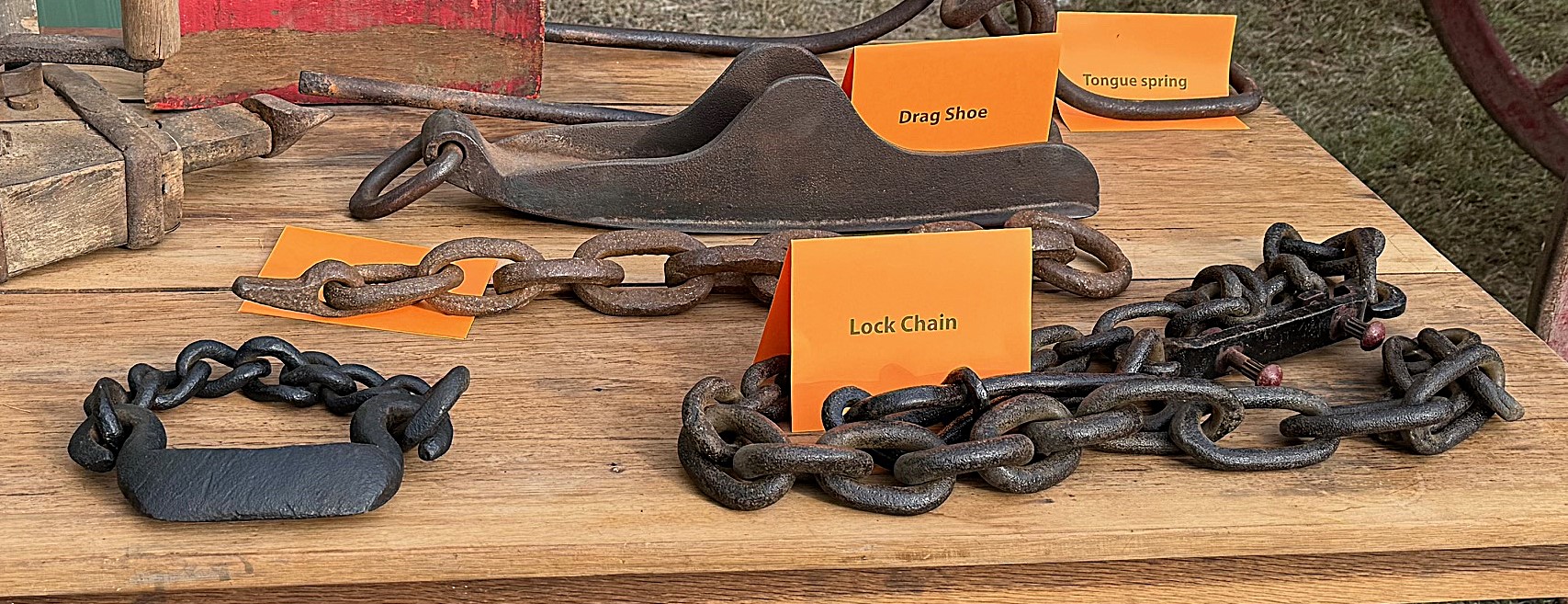
The above image shows a drag shoe, lock chain, and a couple of different styles of rough locks used to help slow and control the descent of a wagon in mountainous terrain.
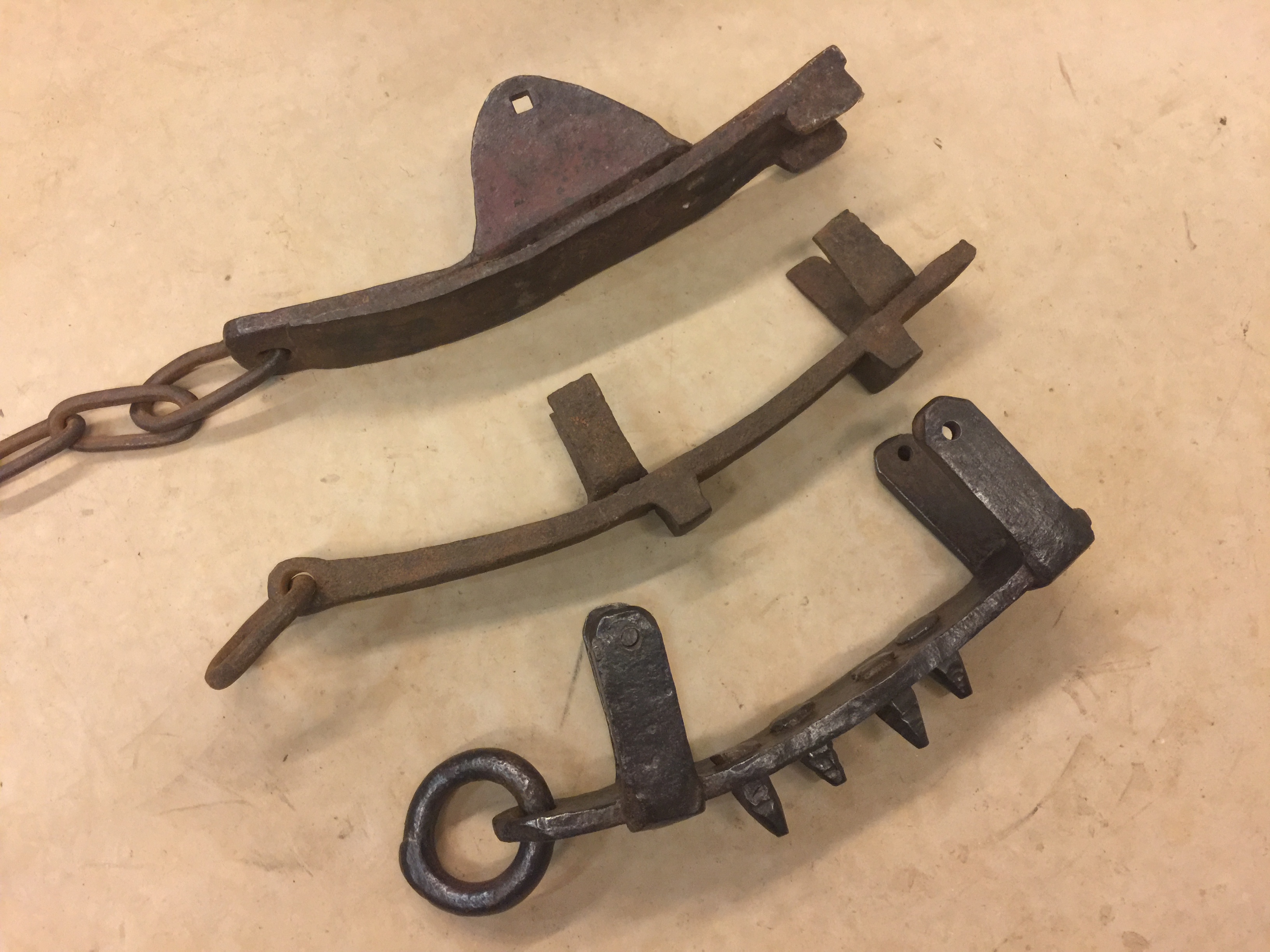
Drag shoes for wagons and stages were made in all types of configurations and sizes.
- One of the largest freight wagons ever crafted stood 13.5 feet tall with 8-foot rear wheels. It was made by legendary coach and wagon maker, M.P. Henderson of Stockton, California. The complete wagon weighed over 6,500 pounds and had a carrying capacity of twelve tons. The 1899 machine measured 33 feet in length, from the tip of the pole to the back of the bed. I wrote a blog on this wagon back on August 26, 2015. Other giant freighters include the survivors in Ketchum, Idaho as well as the well-known 20-Mule Team Borax wagons. Each of these were built by different makers but are equally impressive in size.
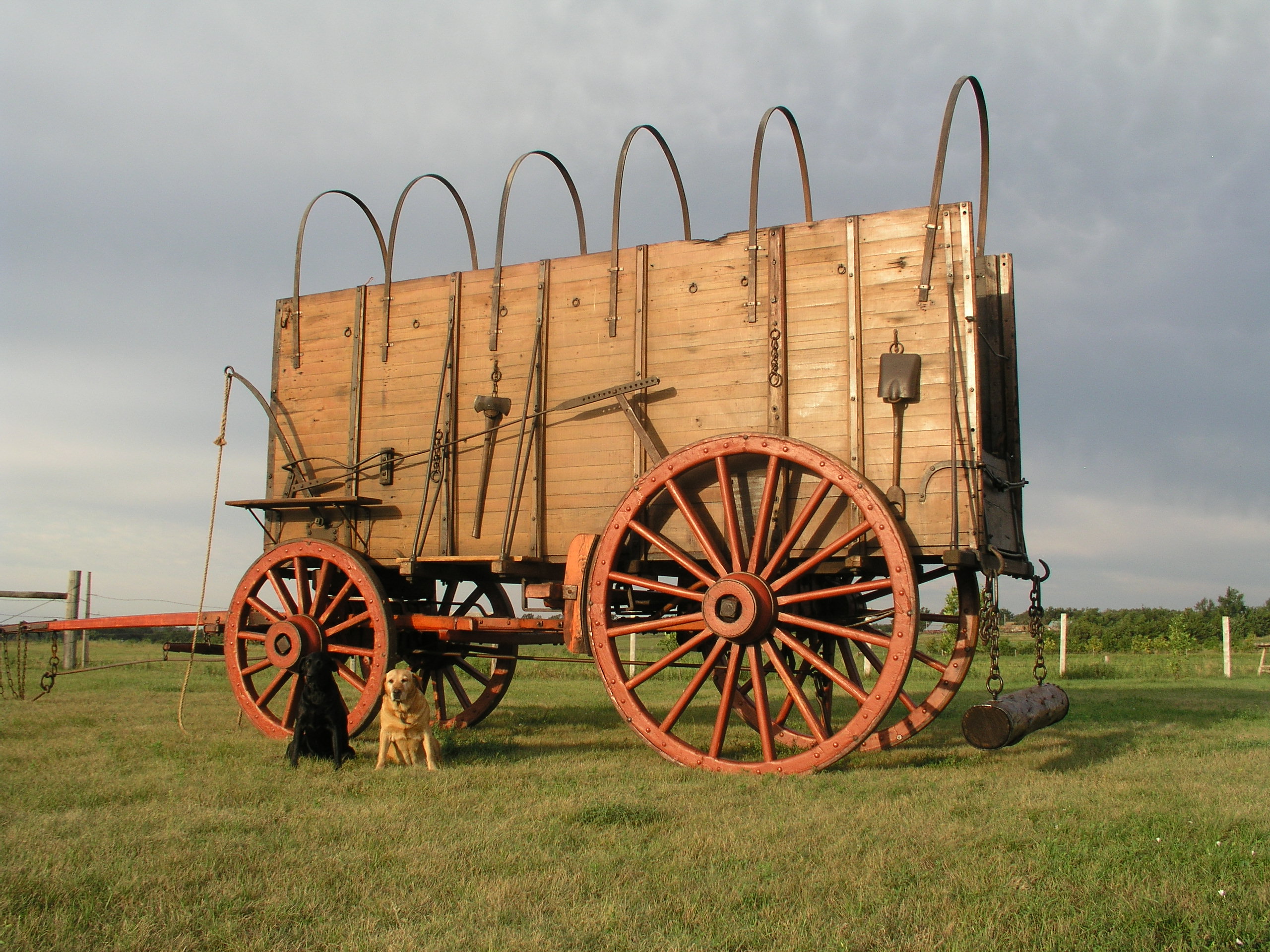
- The first transcontinental trip by stagecoach began on September 16, 1858. Traveling from Tipton, Missouri to San Francisco, California, this course was known as the Butterfield Overland Mail route. Company president, John Butterfield rode the stage to Fort Smith, Arkansas on its inaugural trip. There are markers in Fort Smith today that highlight aspects of the journey. The entire first trip took just under 24 days. Start to finish, it was the longest stagecoach line in the world with over 2,800 miles to cover.
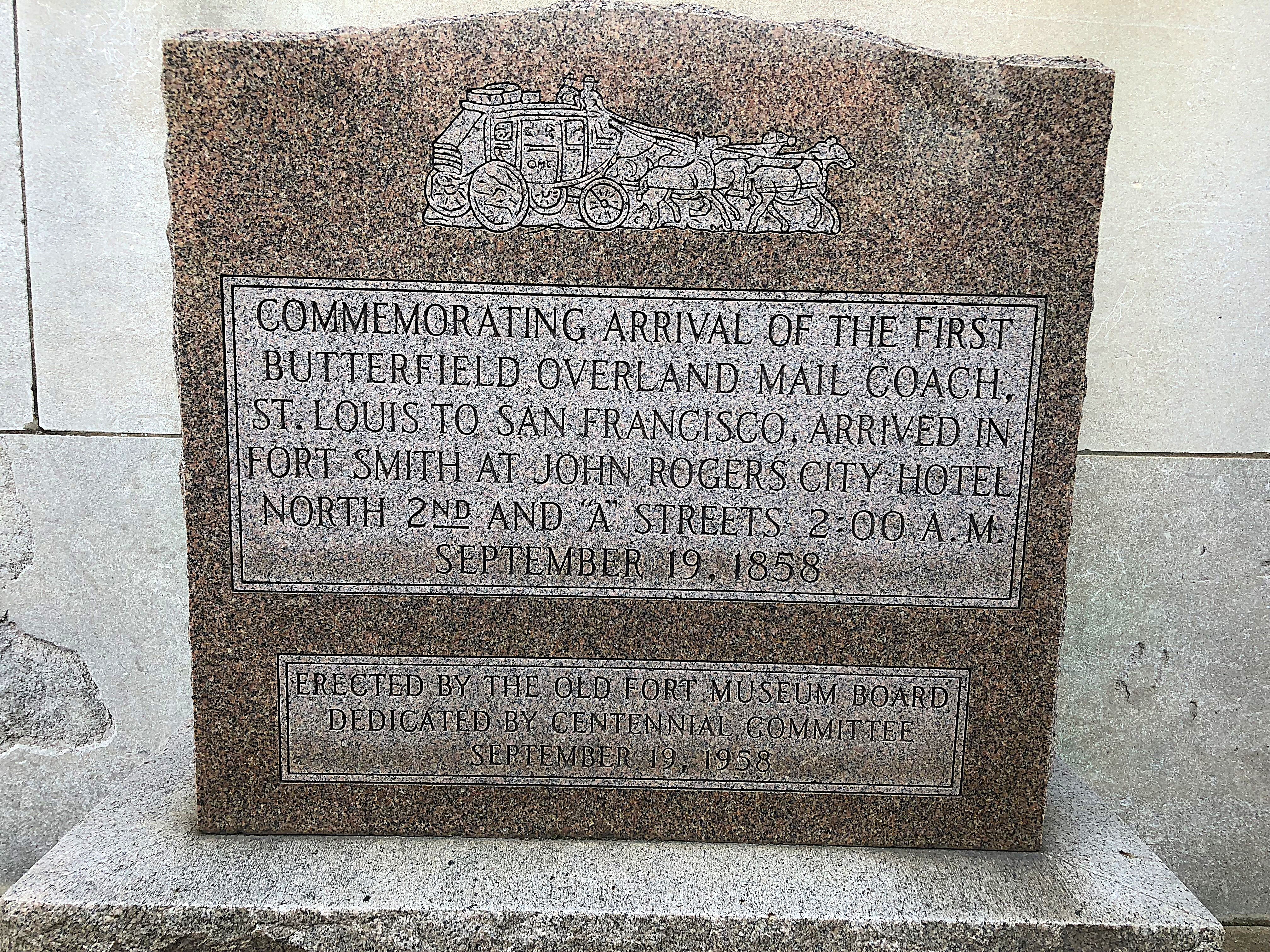
This marker in Fort Smith, Arkansas commemorates the 100th Anniversary of the Butterfield Overland Mail Route.
- Okay, here's number twenty-five... Off the top of your head, can you name the same number of wagon brands as your age? (This is an exercise that favors the young guys!)
Psalm 20:7
